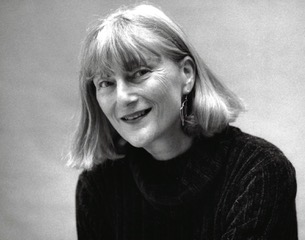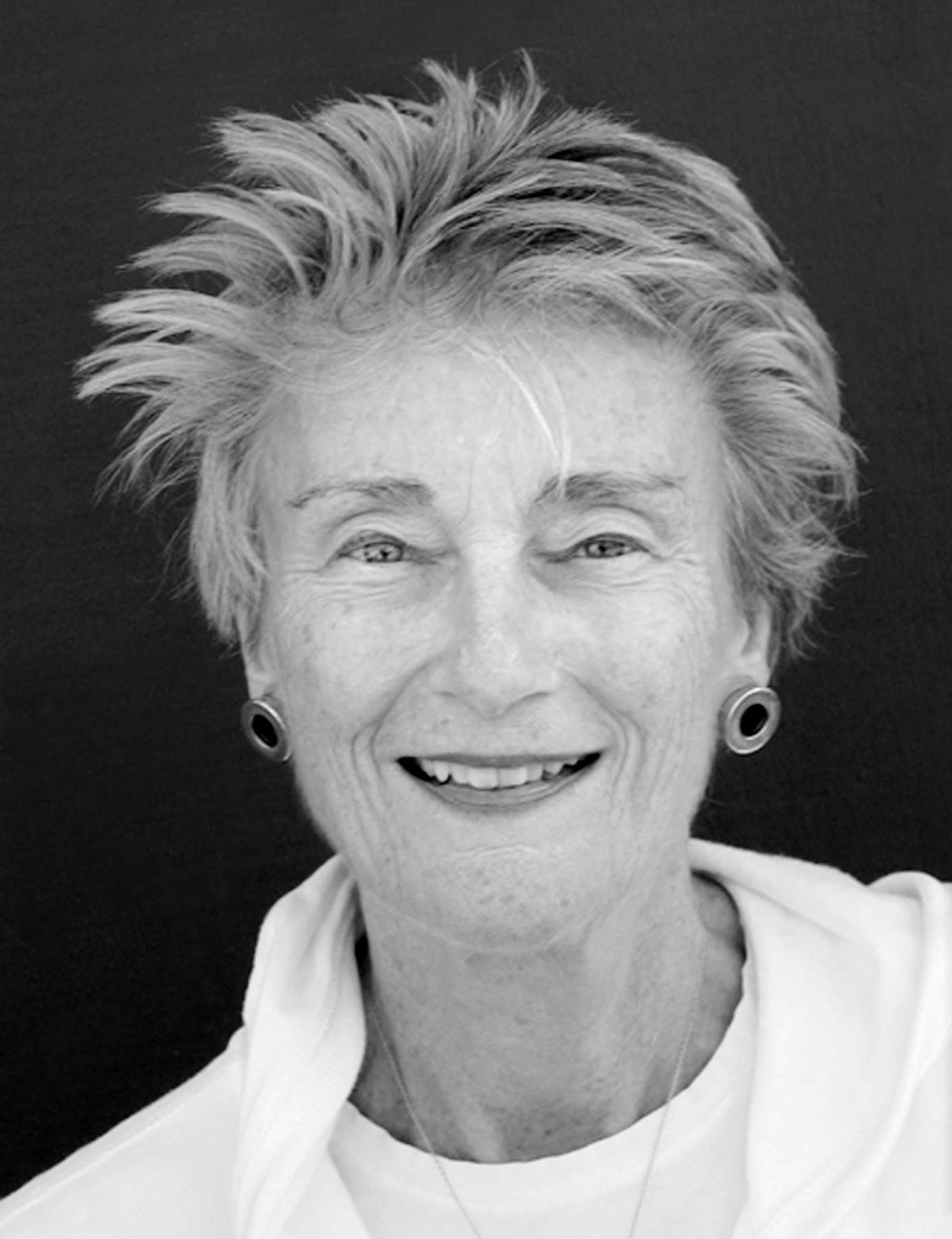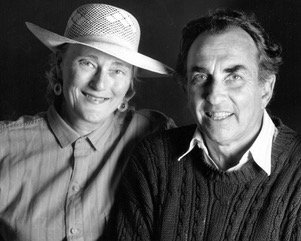
The first time I saw Betty Klausner, I was struck by both her elegance and her sophistication. She was the incarnation of Myrna Loy to Bob Klausner’s William Powell. Betty came from a privileged world where she sold Girl Scout cookies from the family limousine with chauffeur in tow. She could have remained in this world, but in Santa Barbara, she chose to work with artists.Whether figuring out how to get money for canvas or for a meal, Betty was there, helping with career, dinner, critical thought, and conversation.
She brought the best out in people and in the art community. Betty began the Contemporary Graphics Center, where early shows of Steven Cortright and a newcomer like me were held. She was instrumental in acquiring space to bring the Santa Barbara Contemporary Arts Forum (CAF) into being: 1,500 square feet in the Balboa Building and later in a 3,500 square foot space in Paseo Nuevo. CAF organized in Steven’s storefront or in Café Vallarta on Haley and occasionally at the Paradise Café, where conversations on the meaning of art and the practice of artists — between Guy Williams, Joan Tanner, Mary Seamster, Sam Erenberg, and Ciel Bergman — would take place. These strong, engaged discussions between respected friends and artists belied the belief that the only true path was their own. This was a forum forged in wine, beer, food, and passion. Betty helped move this forum heart to the building body. She gave this energy a home.

Betty also was the last survivor of iconic Santa Barbara women, including Carol Valentine, Zola Rex, Gail Berkus, and Mercedes Eichholz, who interacted often and were tenaciously supportive of the arts in Santa Barbara. Collectively, it was a golden age during which these women created more art events, auctions, and exhibitions — and more art collecting — than ever before. Rita Ferri, former assistant director at CAF and curator for the County Arts Commission, said, “We have Betty Klausner to thank for the strong presence of contemporary art in our community today. She fought hard to have CAF recognized as the premier contemporary art space between L.A. and San Francisco. It was her dream, and she would not let it die.”
Betty was a feminist of the first order. She was never conscious of the limits of her gender defined by the constrictions of her time. She was undaunted in what she could dream and accomplish.
Betty’s presence as guest or host was most welcome. While her intellect and strong presence regaled the room, passionate artists were always her delight and amusement. She filled her house with works by Rick Aber, Joan Snyder, Philip Guston, and many young graduate art students. In fact, the Klausner collection formed because she cared about supporting not simply the work but the artist.
When you met her over business, you knew the business was going to get done. A deliberate person, her demands were exacting but always delivered with the utmost respect for those with whom she worked. Despite being told it was too contemporary, she ushered through approval of the first city public art project by Marge Dunlap in Las Aves near the Bird Refuge. Artist Michael Singer created the first public art installation at the Santa Barbara Botanic Garden. The Kienholzes brought their installation to Santa Barbara, and some of CAF’s most memorable installations, including CAF’s 1988 groundbreaking Home Show, were during Betty’s tenure.
Over a vigorous discussion at work one day, the conversation meandered into talks about relationships. I mentioned that my wife and I were having our 10th anniversary on the Fourth of July. A month later, Betty invited us to her Posilipo house, where she had prepared an iced sheet cake to commemorate the occasion. I had forgotten the significance; Betty did not. Once when visiting from San Francisco, Betty announced she was going to stay with us in our modest house on the Mesa because she “wanted to see how the other half lives.” There was no irony in her statement. Betty always lived in a rarefied world — moving with ease from John Ireland’s old home on the beach to the Levi Strauss penthouse in San Francisco.
Betty was passionate about her work with conceptual artist David Ireland and her effort to save his installation site, his Capp Street House in San Francisco. In 2003, she wrote the book Touching Time and Space about David Ireland, literally.

These small anecdotes do little to shape the presence and the force that were Betty and her husband, Bob Klausner, in Santa Barbara. They were the political and cultural touchstones. Together they covered issues pertaining to the environment and contemporary arts — the first went to Bob and the other to Betty. During their time here, they formed a community that still resonates decades after they left to be with their three children and grandchildren in San Francisco.
Betty’s wit was the sharpest, and her heart was the kindest. Betty was taken by the unnatural stillness of Alzheimer’s that envelops some people at the end of their lives. It was the most paradoxical position for someone so vibrant. The stillness has ended, but her presence is still felt deeply by many in Santa Barbara.
Born in 1928 to Mildred and Charles Bloom in New York City, Betty Klausner lived the last 44 years of her life in California, first in Santa Barbara and later in San Francisco.After raising her children with her husband, Betty embarked on a varied career in the arts. She served on the San Francisco Art Institute Board of Directors, was a founder of the Santa Barbara Contemporary Arts Forum (now the Museum of Contemporary Art Santa Barbara), and, along with her late brother, Lewis Bloom, was a devoted benefactor and friend of the Santa Barbara Museum of Art (SBMA).
SBMA Trustee Clay Tedeschi has given $100,000 to establish a Memorial Fund in honor of Betty and Bob Klausner. He has also pledged $150,000 as a match (one dollar for every two given) to encourage support for the Museum’s Imagine More Capital Campaign. Contributions can be made to SBMA, 1130 State Street, S.B., CA 93101, or contact Gina Benesh, director of development, at 884-6431 or gbenesh@ sbma.net.
